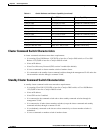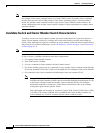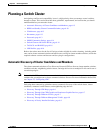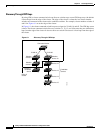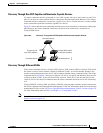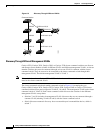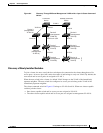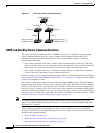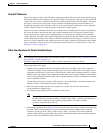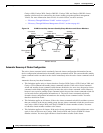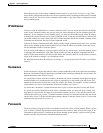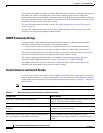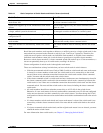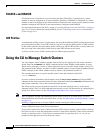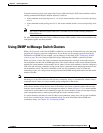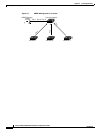
6-11
Catalyst 2960 and 2960-S Switch Software Configuration Guide
OL-8603-09
Chapter 6 Clustering Switches
Planning a Switch Cluster
Virtual IP Addresses
You need to assign a unique virtual IP address and group number and name to the cluster standby group.
This information must be configured on a specific VLAN or routed port on the active cluster command
switch. The active cluster command switch receives traffic destined for the virtual IP address. To manage
the cluster, you must access the active cluster command switch through the virtual IP address, not
through the command-switch IP address. This is in case the IP address of the active cluster command
switch is different from the virtual IP address of the cluster standby group.
If the active cluster command switch fails, the standby cluster command switch assumes ownership of
the virtual IP address and becomes the active cluster command switch. The passive switches in the
cluster standby group compare their assigned priorities to decide the new standby cluster command
switch. The passive standby switch with the highest priority then becomes the standby cluster command
switch. When the previously active cluster command switch becomes active again, it resumes its role as
the active cluster command switch, and the current active cluster command switch becomes the standby
cluster command switch again. For more information about IP address in switch clusters, see the “IP
Addresses” section on page 6-13.
Other Considerations for Cluster Standby Groups
Note For additional considerations about cluster standby groups in switch stacks, see the “Switch Clusters and
Switch Stacks” section on page 6-14.
Stacking is supported only on Catalyst 2960-S switches running the LAN base image.
These requirements also apply:
• Standby cluster command switches must be the same type of switches as the cluster command
switch. For example, if the cluster command switch is a Catalyst 2960 switch, the standby cluster
command switches must also be Catalyst 2960 switches. If the cluster command switch is a Catalyst
2960-S switch, the standby cluster command switches must also be Catalyst 2960-S switches. Refer
to the switch configuration guide of other cluster-capable switches for their requirements on standby
cluster command switches.
If your switch cluster has a Catalyst 2960 switch or a Cisco FlexStack (a stack that contains only
2960-S switches), it should be the cluster command switch.
• Only one cluster standby group can be assigned to a cluster. You can have more than one
router-redundancy standby group.
• All standby-group members must be members of the cluster.
Note There is no limit to the number of switches that you can assign as standby cluster command
switches. However, the total number of switches in the cluster—which would include the
active cluster command switch, standby-group members, and cluster member
switches—cannot be more than 16.
• Each standby-group member (Figure 6-6) must be connected to the cluster command switch through
the same VLAN. In this example, the cluster command switch and standby cluster command
switches are Catalyst 2970, Catalyst 3550, Catalyst 3560, or Catalyst 3750 cluster command
switches. Each standby-group member must also be redundantly connected to each other through at
least one VLAN in common with the switch cluster.



